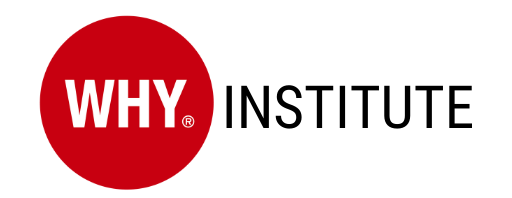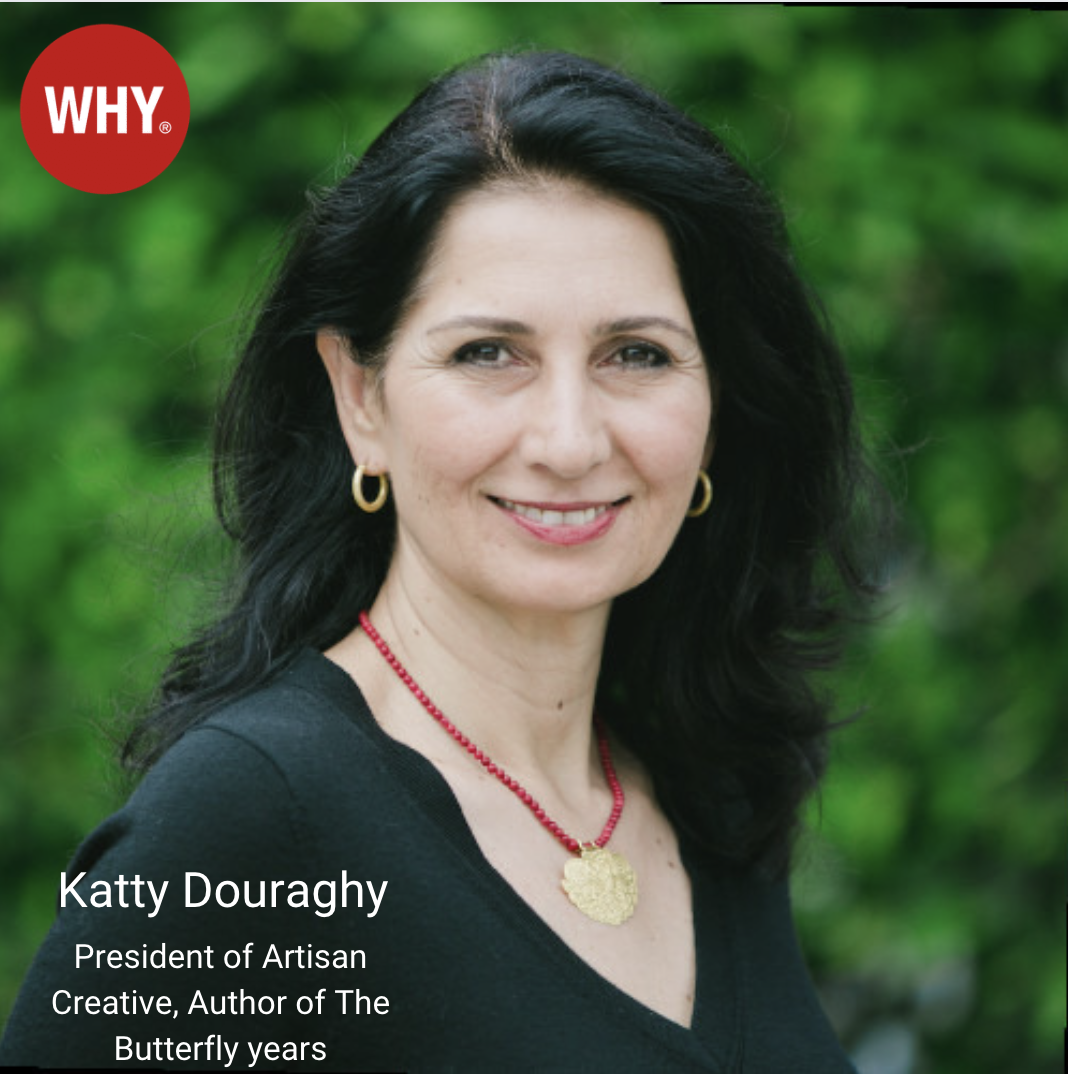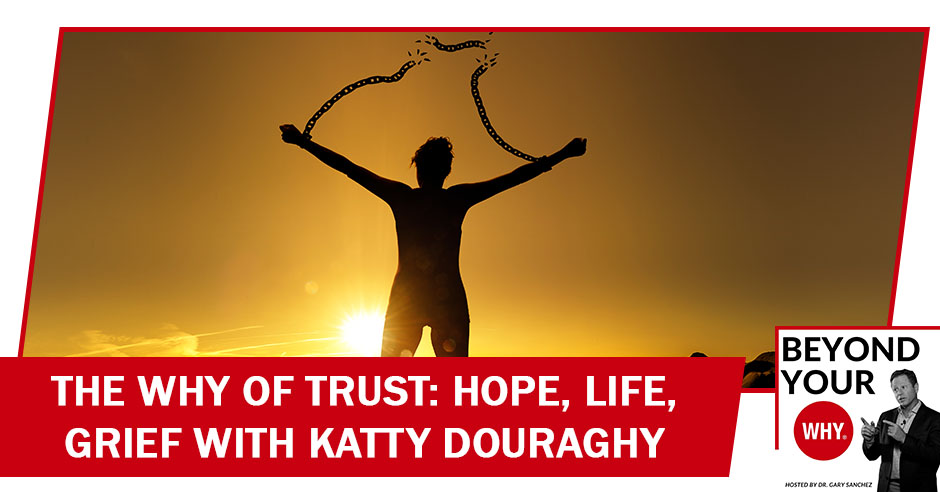
It’s challenging to overcome grief and many other challenges in life if you don’t trust yourself. Dr. Gary Sanchez welcomes Katty Douraghy, the President of Artisan Creative and the author of The Butterfly Years. Katty shares how losing many of her loved ones so close to each other devastated her. It took her years to learn how to live through it and gain hope. For her, the healing process began by trusting herself. Where did she slowly learn to trust herself? By belonging to a community that accepted her. Join the conversation to learn more about the WHY of Trust.
—
Watch the episode here
Listen to the podcast here
The WHY Of Trust: Hope, Life, Grief With Katty Douraghy
In this episode, we are going to be talking about the why of trust, to create relationships based upon trust. People with this why believe that trust is the most important thing and will work hard to create it. They will become educated as experts in a particular subject and demonstrate that expertise as a way of establishing trust.
They will do things right to demonstrate that they are trustworthy. They want to know that you believe in them and will go the extra mile to demonstrate with their actions, words, and deeds. In communication with someone with this why, you might read words along the lines of, “You can count on me.”
I have got a great guest for you. Her name is Katty Douraghy. She is President of Artisan Creative, a staffing and recruitment agency focusing on digital, creative, and marketing talent. She is the Founder of Inspiring Hiring, an online resume and a job posting portal. She is also a team and retreat facilitator working closely with entrepreneurs to become better versions of themselves.
She is the podcast host for The Artisan Podcast, sharing stories of creativity and inspiration. She is also the author of Butterfly Years, sharing the lessons learned during a long period of grief and mourning that led to a path towards hope. Her last project, the Butterfly Years Journal, a daily journal from grief to growth, came out in January 2022. She believes we all have a story to share and that our greatest journey towards hope and healing is through self-reflection and discovery. Welcome to the show.
Thank you for that illustrious intro. I appreciate it.
I have been looking forward to this, and we have been talking about doing this for quite a while because you are familiar with the 9 Whys and the Why.os and all of this. You have been doing this for quite a while. Let’s first learn a little bit about you. Tell us about your name.
It is short for Katāyoun, which is a fictitious princess’ name in old Persian folklore.
Where did you grow up? Where were you born? Tell us what you were like in high school, and take us on your journey.
I grew up in Iran until the age of thirteen. We immigrated because of the revolution in Iran. We immigrated first to England and then to the US. My high school years were tough for me. High school years were during the time that the hostages were taken. The last thing I wanted to do was be Iranian. I tried hard to suppress that side of me and my identity and shove it aside.
[bctt tweet=”Not having a security blanket allows you to put yourself out there. ” username=”whyinstitute”]
I passport many different cultures. I pretended I was Italian, Mexican, and Indian. You name it, anything but Iranian. It has taken many years to settle into who I am. For many years, I thought I did not belong anywhere. Now I realize that I belong everywhere. I’m a mixture of Eastern, West, and everything in between. That is me in and nutshell.
Were you in England during that time or during the hostage?
We were in England for a short time right after the revolution. By the time we moved to the US, it was around the time when the hostages were taken. High school was not fun.
Where was your high school?
My high school was in Northern California in a town called Cupertino, which everybody knows now because Apple is there. Apple was not there back then. It is the same high school that Steve Jobs and Steve Wozniak went to, Homestead High School.
Did you know him?
No, they were before me.
Take us into what it was like back then. What was a day in the life of an Iranian girl in high school like? What was it like going to high school?
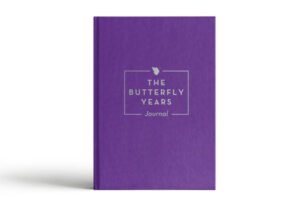
High school was tough because I started high school in the middle of ninth grade. High school is not easy at any age, regardless of being a foreigner in the middle of the high school years. Add to that what was happening out in the world. At the time, many people did not know where Iran was, and they only associated Iran with the Diatoula or with hostages. It was a tough time.
The beauty of what was happening during high school was that my cousin also lived with us at the time. She immigrated, and her parents were still overseas. She came and lived with us. For the first three and a half years of high school, I had her. She was my security blanket, and I stuck to her closely. She graduated early and left to go to Texas.
For the last semester in high school, I had to figure out how to navigate waters. As tough as it was, it was good for me not to have that security blanket. It allowed me to put myself out there. My English was good. It was not great but it forced me to become great. I even became an English Literature major in college. Something happened during that last year.
It forced you to trust yourself.
Yes.
Where did you go to college?
I went to college in Santa Cruz, also in Northern California. At the beginning of my high school years, I did not trust anyone else because I did not trust where I was coming from. It took me a while to recognize that, and I was on solid ground as to who I was as a person. By the time I went to college, it was when I had started to learn how to spread my wings.
It was a completely different story. I was out there. I had lots of friends, and I was incredibly social. I came out of this chrysalis. I have used the butterfly chrysalis analogy throughout my life. In high school, I was in this dark place. In college, I came out and was the social butterfly. I was everywhere. It came into my own and found my voice then.
[bctt tweet=”It’s important to share your story with other people. ” username=”whyinstitute”]
It is interesting to think about somebody with a why of trust, not even in your circumstances but in general, having to go through high school. Nobody trusts themselves in high school, at least most people do not. I know I did not. You do not know where you are going and what you are about. It is challenging anyways but with the why of trust, seeing is the most important relationship with yourself. That can cause a lot of anxiety.
The whole notion of self-trust was not there. I questioned everything. I did everything I said. If whatever I said did not land well on someone, that little voice in my head was like, “You did this wrong.” That is such a difficult thing for a young person to go through. It can set the stage for self-doubt at later ages. I’m fortunate that because of the trust that I was able to gain later on in my college years, it did not end up having a lasting impact.
Off to college in Santa Cruz, you majored in English Literature. What did you do with that?
I did not do anything with it. I did learn how to speak English better, which I certainly needed for living here. This is home for me now. What I did after that was I went to the Fashion Institute of Design & Merchandising. I was interested in the fashion space. I ended up working in retail and fashion for several years.
This is an interesting story where I could see my why. I can see it now. I was not aware of it back then but where I could see how my why had impacted my career trajectory all these years. When I started in retail, I was a personal shopper. We would get into dressing rooms with people to help consult on the fit, color, shape, and analyze body shapes to be able to make recommendations.
There is nothing more intimate than being with someone who is trusting you to undress and allow you to give them some feedback as to what could be a stronger, better version of themselves. This is through clothing and fashion but when I look back on how my trust manifested itself, that was powerful to be able to do that.
How long did you do that?
Several years.

What happened after that?
My husband, Jamie, recruited me to come and work for his company, which is the staffing and recruiting firm that I own and run. He was like, “You have all this experience. You have managed these larger teams, dollar amounts. Come, I could use your help.” I did, and that was an interesting thing starting to work with your spouse. We had to define roles. That is where trust had to come into play. He trusted me that I could run this business that he had started and founded, and I trusted myself that I was not going to let him down and do things the right way to hopefully grow the business.
For the readers that are not familiar with Jamie, he is Katty’s husband. I have had him on the show before. Jamie has got a fascinating story about how he discovered his why down in Argentina. On his way back, he decided he was going to put you in charge. You became the CEO.
It is all because of the why. I should tell this story to your readers. Jamie went on this trip to Argentina and had an opportunity to discover his why while he was on this trip. He comes back and says, “I figured out my why. I know what I’m going to be doing next. I’m stepping out of the business, and it is all yours.” I was like, “You are doing what?”
It was the beginning of this beautiful relationship. As a couple, understanding our why and being able to communicate through that has been incredibly powerful. I can’t recommend it enough to anyone who has discovered their why to encourage their spouse and partner to do the same because it does impact how we communicate and show up for each other. Thanks, Gary.
It is interesting because you have the why of trust, and he has the why of contribute. That is a particularly good match, those two together. You want to make sure that you create a trust for him, and he wants to make sure that he contributes to you. It does not get any better than that. That seems to be the combination that I have seen over time work the best. You two happen to have that. What I do not know is how did you meet Jamie?
We met at a Halloween party. For your reader who knows his story, Jamie is a fencer. He was at this Halloween party in full fencing garb with his mask on his weapon and all dressed in white. I was a Persian cat, which is not imaginative. The party was at a restaurant that had closed down for that evening, and they had all these Halloween decorations everywhere. They had boards and pomegranates. That was part of the decorations. I love pomegranates. I’m a huge fan of it. I was like, “Does anybody want to share a pomegranate with me?” Jamie stepped forth. Even with his pristine white fencing outfit, he cut into this pomegranate. That was it. We met in 1992.
You took over Artisan Creative, and you have been running that for how long because I know now you have some other interests on top of that.
[bctt tweet=”Live for other people, especially those who can’t live anymore. ” username=”whyinstitute”]
I have been running the business now since 2012. I’m passionate about it. My why shows up there every day. In the recruitment space, if you cannot establish trust between both hiring managers, specifically also with candidates, it takes a lot of trust for someone to leave a job and trust you that what you are presenting to them is a better opportunity for them. I see that come into play daily. Trust shows up in my everyday interactions.
I have been running Artisan for several years. I have a great team. I’m still involved, hands-on, day-to-day but I’m also passionate about a lot of other things. I’m passionate about facilitation, bringing people together, and creating a space so they can have a trusted conversation with each other. I’m active on that side. As you mentioned, a few years ago, I embarked finally on using my English Literature degree on this journey towards hope because of some personal tragedies that had happened in my life. I knew I had to tell the story.
You wrote a book called the Butterfly Years. What is the book about? Who is the book for?
The book is about my journey through grief. I lost my stepmother in January 2011, my father in February 2011, and my mother in April 2011. In 2013, I lost my cousin, Malise, the same cousin who lived with me for years. We went to high school together. I lost her as well as my uncle. That was compounded by the loss of my stepdad several years after that. For a four-year period, it was a pretty dark time.
This journey of grief was overwhelming for me. I was not sure how to navigate it. At the same time, as I was going through grief, life and love were around me. I was in this space of this duality of love and loss, death and life, and all of that. I had a hard time coming to grasp it. Once I did, I thought it was important to share that with other people. That is what I needed to get this story out. Story sharing was cathartic to put it out there. My goal was to be able to help others who were going through what I was going through, what I had gone through, and what I had learned.
The story initially was not intended to be a memoir. It became one. I can only assume that some people up there wanted to have their story told. The journal was intended to be the only thing I was ever going to create. I wanted a self-help manual for other people to navigate this journey. My story needed to come out first, and it did.
The reason that it took three years for me to write this teeny tiny little book was going back to trust. I needed to make sure that I honored the legacy of my parents. The book is specifically about my mom and my relationship with her but other people and their stories are in there, too. I was not trusting myself that I was telling her story in the right way.
I had several drafts that I crumbled papers, threw it out, rewrote, and cried through the whole thing as I wrote it because it was important to make sure that I was doing this properly. It was honoring and trusting the relationship I had with her, not just in life but in death. I knew her story was going to continue by writing about her, and it had to be done the right way.
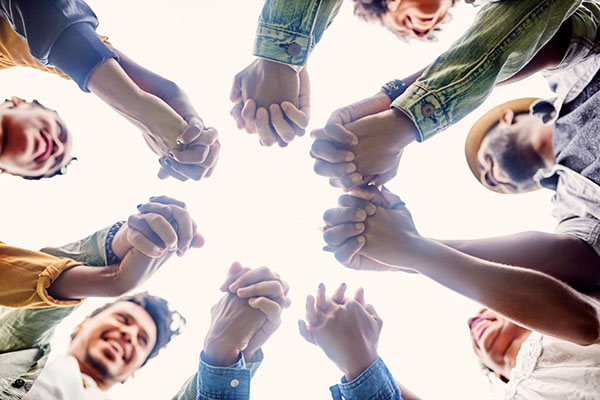
What is grief?
Grief is a different thing for different people. My biggest lesson here is that there isn’t one way to grieve, to experience loss. What it was for me was a mixture of emotions. For some reason, I had read about grief and going through grief. I thought it was this linear thing that you went through anger, denial, and this and that. It was not that. It was this big ball of a mess of emotions that went back and forth between sadness and happiness.
Talk about self-judgment, trust, and self-trust. When I had a moment of respite, I would laugh at what was going on. I did it with guilt, and I was not trusting that I was doing this the right way. I kept questioning myself, “Am I honoring properly? Should I be grieving more? If I laugh, is it the wrong thing?” What grief is whatever anyone feels that it is for them. For someone, it has an external expression, and for others, it is an internal journey that they go through. Mine was a mishmash of everything.
What happened to you? What was the turning point? What was the learning point of figuring out how to handle your grief?
It was simultaneous. At the same time that death happened, life was happening around me. I had a hard time recognizing what was going on. Driving from the hospital to my stepdad’s house, this was April 2011. My mom passed away on April 17th, 2011. They were looking out the windows as we were driving. I pushed the button to lower down the window, and looking out the window was beautiful.
I had not seen flowers that vibrant ever. I had not seen grass that green ever. Something had happened to me. It feels like I woke up. While I was distraught, I was also recognizing that something was happening. The sun did come out the next day, which I was not expecting for it to come out. The loss, grief, and learning to live with it happened simultaneously, even though I did not see it at the time.
It took a few years to recognize that but that juxtaposition of love and loss, life and death, was powerful from the first moment. The colors were vibrant. The smells were too much. My taste buds were alive. It was a hard thing to describe. At the time, I was like, “I had never tasted this before because every sense was heightened.” This is my personal belief. I believe that I was living for other people because they could not live anymore. I think everything had come to me. They trusted me with living life for them.
Why do you think you had that revelation? Why do you think that happened to you?
[bctt tweet=”Be part of a community that appreciates you. ” username=”whyinstitute”]
If I could pinpoint what happened, I would have another book in me to be able to share that with others. I do not know what happened. All I can think about is at the moment when I watched death happen when I witnessed my mom take her last breath. For the first time, I realized how precious life was and that this was my opportunity to continue living and live it as I had never lived it before. I took over Artisan that same year, within a few months of the loss happening. The switch was turned on, and I was like, “I’m going to say yes to everything. I’m going to take life by the horns and go for it.” My only explanation is that witnessing death somehow sparked life within me.
What was the turning point that you had from high school to college, from the scared Katty to the outgoing, creative Katty? What was that moment that allowed you to switch?
It was having a belonging and a community that had acceptance. With that acceptance came the realization that I could trust myself and others. A big piece of it is in high school, I did not trust others either, but in college, I could. Everyone was from somewhere else. We were all starting at the same footing. Whereas in high school, I entered the middle of this tumultuous period that was happening in the world. In college, we all started the journey together but having this acceptance and being in the community, accepted and allowed me to trust myself.
You have all the challenges with the family members passing. It seems like you were able to start anew again.
That goes back to the community. As you know, I’m very involved with the Entrepreneurs’ Organization, EO. I had several opportunities through my volunteer work with EO to share my story and be part of a community that appreciated hearing it. I have other people come up to me and say, “No one has talked about grief like this before. Thank you.” To be able to have that and realize that we do not talk about death. No one wants to talk but it is the reality for all of us. Can we create a trusted and safe space to be able to talk about death and not feel that we are being judged? Talk about grief and not feel that we need to be rushed to get over it because we are all going to go through it on our own terms and pace.
In a certain way, all the challenges you went through and the death of your family members ended up being positive. However that happened, it was flipped from grief to life.
I read a proverb, which was the beginning of the journey towards hope. It said, “Just when the caterpillar thought the world was over, it became a butterfly.” That was a lifeline that I held onto it. During those darkest days, I would say, “I’m going to come out of this. This is darkness. This is a chrysalis. I’m going to come out of it and be a butterfly. I’m going take wing.” There were many days that I doubted that but that put one step in front of the next, and that is what has got me through.
When you are done with grief, is it over, is it still lingering, is it still pop up every now and then? How does that work?
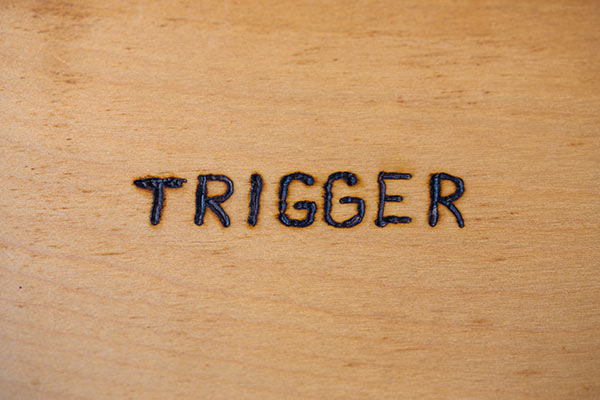
It pops up all the time. I do not think it is over. There was a time that I thought maybe one would heal from it but I have realized that is not the case. We learned to accept and live with it but it is there. A smell, picture or a memory triggers it all the time. At the strangest of times, it comes up. It is a beautiful thing. I do not mind it coming up. I don’t want to ever forget. It is a reminder for me, and that is a good thing.
From there, you and Jamie have started to work with couples in the EO organization. What is your focus on your couple’s work?
I spend quite a bit of time on communication on triggers. My secret sauce or power is to create a safe environment for people to have conversations. Trust as the dominant force is there. If I can create a space where people can trust that they will be safe and share whatever they want to share without judgment, I have done my job. That is what Jamie and I spend our time with.
Jamie speaks about the why, the communication between couples, and how important that is. A lot of what we do is also experience sharing because knowing what our whys are has been a huge transformation in our relationship. Back in the day, before we knew what we know now, Jamie would get a little annoyed with me, and he thought I would be dwelling on things.
“I dwell on possibilities,” on my walls is the favorite quote for me. He had a hard time recognizing why. It took me a while to get over things, the spoken word with someone, not necessarily with him but with someone or someone who did not do what they said they were going to do or me staying up until 2:00 in the morning because I had told someone I was going to do something for them. He couldn’t understand why I was taking as much time or not getting over it as quickly as he was.
When we went through our why discovery and recognized that creating relationships based on trust is what is my driving force, and then he understood. Since then, he has never once asked me, “Why are you still dwelling on this? Why are you working until 2:00 in the morning?” He knows that it is coming from a place where I have to do it.
I can imagine that you have taught him to create a safe space because he does that as well, at least, maybe not within his marriage because sometimes that can be harder for other people that know Jamie. That is what people say about him.
He does it naturally and because his why is to contribute. He does it from that point of view. He is creating a safe space because he is contributing to the greater good so people can have conversations with each other. Our end goal ends up being the same. How we go about it is different.
[bctt tweet=”Ask questions from a curiosity standpoint.” username=”whyinstitute”]
Do you work in larger groups? Is it five couples? What size groups do you work with, and what do you do with them? What do you call the workshops that you and Jamie do?
The couple sizes differ at anywhere from ten couples to larger. We have done it for about eight couples. Probably it is the smallest group that we have done it. We are not couples counselors. It is not a one-to-one thing with couples. What we do is give them the tools so they can communicate and talk about things that maybe they do not naturally talk about.
We are facilitating conversations and asking questions from a curiosity standpoint, so they can feel comfortable to be able to answer that with each other. Jamie does the discovering their whys with them, creating a space so they can have a conversation around that. We utilize some of the tools. I talk about triggers and how couples get triggered. Getting triggered is not a bad thing. It is how we behave after we are triggered. That is the bad thing.
A trigger could be a positive thing. It is part of some learning that I have had with Marshall Goldsmith about triggers and a variety of other things about listening. We talk a lot about listening and laugh about it too because we experience sharing. I’m not sharing anything with anyone that I have not gone through myself. There is a lot of humor in that.
Let’s talk about triggers because that is an interesting thing for me. I was a dentist for so long, and people would get triggered by the dentist. They would walk into the dental office, and they would get triggered by a smell, a look or whatever. Do you overcome a trigger? Do you roll with it? What is your advice for people dealing with triggers? It’s because we all are.
We all get triggered all the time. The first thing would be, and this is what I learned from Marshall Goldsmith’s teachings is, a trigger is a trigger. It is a stimulus. How we behave towards it is on us. If we decide and choose to change our behavior, what are the steps we can take? An example of that is my mom passed away from lung cancer. She smoked until the very end. The last week, when she was in the hospital, was the only time she did not smoke.
Every time I would walk into her house and smell the cigarette smoke, I would get triggered. In the beginning, I would get into an argument with her, “Why are you smoking? It is not good for you. Don’t you know you are sick?” She knows she is sick. I realized one day that her time was limited. If every interaction with her is going to be a negative interaction, that is the last thing I want.
I was still triggered by the cigarette smoke but what I learned to do was to change my behavior. I would walk into the house. I would smell the cigarette smoke. I would wait a few minutes outside the door before I went into her bedroom. I would wait until she was done with the cigarette and walk in. She was not going to change smoking. The trigger was going to be the trigger but the only thing I could control was my behavior.

That is the only thing all of us can have any say in how we react to things, not the external stimulus. The external stimulus is going to be there. My brother is also a smoker. He and she would sit around together and have the best conversations because they were having a smoke together. That same stimulus, as negative as it was for me, was not a negative stimulus for him. Anything else was positive because they would sit around, have a chat, a cup of tea, and a cigarette together.
My perception of a trigger is probably inaccurate. What I have heard when people say, “I’m triggered,” gives me freedom and reign to blow up or react any way I want to react because I have been triggered. It is like my free pass to do whatever the heck I want to do because I have been triggered. The way you said it was different. Your trigger is a stimulus that causes a reaction but you can choose what that reaction is.
Driving is a trigger for me. I have paid attention to this. The environment clearly makes a difference. If I’m hot, late, traffic, it puts me in a bad mood. I’m triggered negatively. If I’m not late, if the AC is on, and I’m not hot, temperature and punctuality are triggers for me because of the trust thing. If I was late and it was not the right way either, I did not do what I said I was going to do. That is where it shows up for me. If I’m not late and have all the time in the world, you could put me in traffic, and I’m not triggered at all. I’m listening to music or an audiobook. All is good. I’m enjoying the extra time that I have but the traffic is the stimulus.
Last question for you, Katty. What is the best piece of advice you have ever been given or what is the best piece of advice you have ever given to somebody?
Trust yourself because it took me many years to get there and realize that it is similar to triggers. All the tools are within me. I just had to trust myself to be able to rely on those tools. I have sharpened those tools over the years.
Katty, if somebody is reading this and they say, “I would love to connect with you. I would love to have you come work with our group or connect with you about Artisan,” what would be the best way for them to connect with you?
I’m on LinkedIn. You will find me, @KattyDouraghy. ButterflyYears.com, you can connect with me directly at KattyDouraghy.com. All my facilitation work is on there. You can connect with me there or at KattyD@ArtisanCreative.com.
Thank you so much for being on the show. I have been looking forward to this since I saw you. For the readers, Katty is in LA now, but she is about to move as soon as the house gets built to Albuquerque. We are going to be neighbors soon. I’m looking forward to that.
Me too, Gary. Thank you for having me.
Take care.
—
It is time for our new segment, Guess the Why. For this one, we are going to use Will Smith. Will Smith went on stage and slapped Chris Rock because he said something derogatory or made fun of Will Smith’s wife and about her not having any hair. He called her GI Jane, and he did not like it. He went on stage and slapped Chris Rock. Some people think that it was the right thing, and some people think it was the wrong thing to do but what do you think will Smith’s why is?
If I had to guess, I would guess that his why is trust. I have heard Will Smith talk and listened to some interviews with him. He talks a lot about trusting yourself, focusing on yourself first, and being the person you can trust. I’m sure that Chris Rock talking about his wife broke their bond and trust because they were friends, and it was not okay. It was not appropriate for him to do that from Will Smith’s perspective, especially through what she has been suffering.
My guess is trust. What do you think? If you can, tell us what you think. I want to thank you for reading. If you have not yet discovered your why, you can do so at WhyInstitute.com, with the code PODCAST50. You can get it for 50% off. If you love the show, please do not forget to subscribe and leave us a review and rating. Thank you so much, and have a great week.
Important Links
- Artisan Creative
- Inspiring Hiring
- The Artisan Podcast
- Butterfly Years
- Butterfly Years Journal
- Why.os
- How Knowing Your WHY Shapes Your Plan – Previous Episode
- Entrepreneurs’ Organization
- @KattyDouraghy – LinkedIn
- ButterflyYears.com
- KattyDouraghy.com
- KattyD@ArtisanCreative.com
About Katty Douraghy
 Katty is president of Artisan Creative, a staffing and recruitment agency focusing on digital, creative, and marketing talent, and founder of Inspiring Hiring, an online resume, and job posting portal. Katty is also a team and retreat facilitator working closely with entrepreneurs to become better versions of themselves. Katty is the podcast host for the artisan podcast, sharing stories of creativity and inspiration,
Katty is president of Artisan Creative, a staffing and recruitment agency focusing on digital, creative, and marketing talent, and founder of Inspiring Hiring, an online resume, and job posting portal. Katty is also a team and retreat facilitator working closely with entrepreneurs to become better versions of themselves. Katty is the podcast host for the artisan podcast, sharing stories of creativity and inspiration,